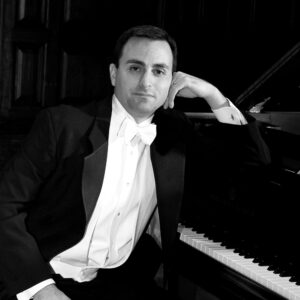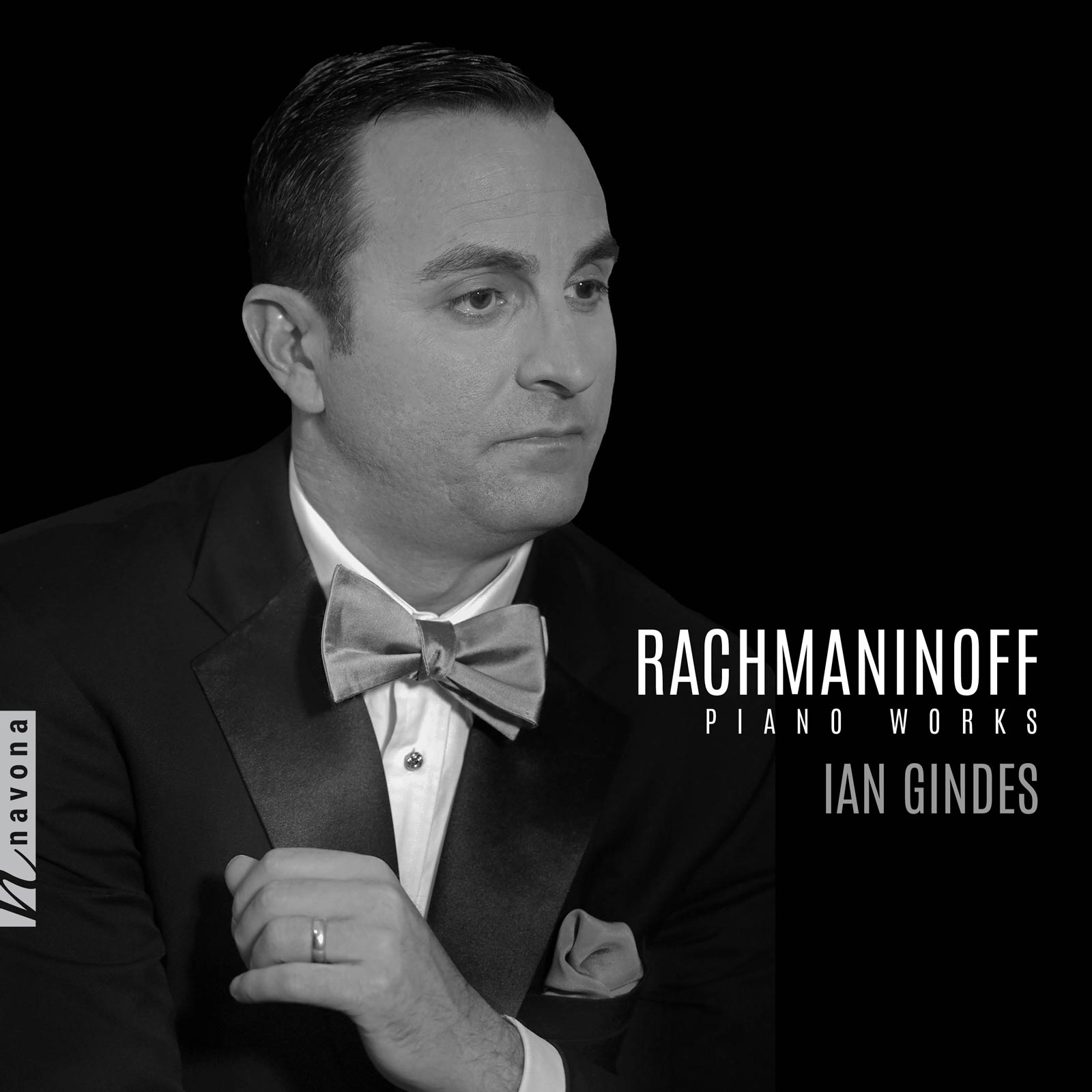Rachmaninoff
Ian Gindes piano
Pianist Ian Gindes presents a captivating elucidation of Sergei Rachmaninoff’s solo piano works on RACHMANINOFF, a new album of discerning artistry. With meticulous care and interpretive insight, Gindes navigates the rich tapestry of Rachmaninoff’s compositions, peeling back the layers on their emotional depth and their technical intricacies.
The Russian-American composer’s signature confluence of opulent chromatic harmonies and classically informed structures is imbued with zest under Gindes’ adept touch. Gindes finds an astute balance of lyricism and virtuosity, while his intuitive phrasing enhances the inherent narrative of each of the Preludes and Études-Tableaux. The album is rounded off by a fitting tribute, composed by Jerry Goldsmith and arranged by Jed Distler, honoring Rachmaninoff’s influence on Hollywood and jazz.
Listen
Stream/Buy
Choose your platform
Track Listing & Credits
| # | Title | Composer | Performer | |
|---|---|---|---|---|
| 01 | Lilacs Op. 21, No. 5 in A- Flat Major | Sergei Rachmaninoff | Ian Gindes, piano | 2:54 |
| 02 | Études-Tableaux Op. 33, No. 4 in D Minor | Sergei Rachmaninoff | Ian Gindes, piano | 3:45 |
| 03 | Études-Tableaux Op. 33, No. 8 in G Minor | Sergei Rachmaninoff | Ian Gindes, piano | 4:49 |
| 04 | Études-Tableaux Op. 39, No. 1 in C Minor | Sergei Rachmaninoff | Ian Gindes, piano | 3:43 |
| 05 | Études-Tableaux Op. 39, No. 8 in D Minor | Sergei Rachmaninoff | Ian Gindes, piano | 4:03 |
| 06 | Preludes Op. 3, No. 2 in C-Sharp Minor | Sergei Rachmaninoff | Ian Gindes, piano | 5:07 |
| 07 | Preludes Op. 23, No. 2 in B-Flat Major | Sergei Rachmaninoff | Ian Gindes, piano | 3:31 |
| 08 | Preludes Op. 23, No. 4 in D Major | Sergei Rachmaninoff | Ian Gindes, piano | 5:32 |
| 09 | Preludes Op. 23, No. 5 in G Minor | Sergei Rachmaninoff | Ian Gindes, piano | 4:21 |
| 10 | Preludes Op. 23, No. 8 in A-Flat Major | Sergei Rachmaninoff | Ian Gindes, piano | 3:27 |
| 11 | Preludes Op. 32, No. 10 in B Minor | Sergei Rachmaninoff | Ian Gindes, piano | 6:43 |
| 12 | Liebesleid (Love’s Sorrow) | Fritz Kreisler arr. Sergei Rachmaninoff | Ian Gindes, piano | 4:56 |
| 13 | Vocalise Op. 34, No. 14 | Sergei Rachmaninoff arr. Zoltan Kocsis | Ian Gindes, piano | 7:10 |
| 14 | Alone in the World | Jerry Goldsmith arr. Jed Distler | Ian Gindes, piano | 7:46 |
Acknowledgments
Thank you to everyone who helped make this recording possible, including Thomas Zoells, PianoForte Chicago, Rachel Frazier, sound engineer, Caleb Crockett and Joey Della Vecchia, piano technicians, Jed Distler, composer, Anne Marie Kuhny, producer, John Wagstaff (formerly of University of Illinois Libraries) for research and liner notes, and Ann Gindes, photographer and editor. Thank you also to PARMA Recordings as well as to Mary Mazurek and Cosmo Buono for their support.
Dedication
In memory of my Dad, my first piano teacher, who instilled in me a love of Rachmaninoff’s music.
Recorded at PianoForte Chicago in Chicago IL
Recording Session Producer Anne Marie Kuhny
Recording Session Engineer Rachel Frazier
Editing and Mixing Rachel Frazier
Piano Technicians Caleb Crockett, Joey Della Vecchia
Mastering Melanie Montgomery
Executive Producer Bob Lord
A&R Director Brandon MacNeil
VP of Production Jan Košulič
Audio Director Lucas Paquette
VP, Design & Marketing Brett Picknell
Art Director Ryan Harrison
Design Edward A. Fleming
Publicity Aidan Curran
Artist Information

Ian Gindes
Ian Gindes has performed live at many venues, including PianoForte Chicago, Krannert Center for the Performing Arts, the Donald W. Nixon Centre, Yavapai College Performance Hall, and Carnegie Hall in New York. Gindes’ debut there earned praise from New York Concert Review. His previous recording, American Visions, was lauded by Gramophone Magazine (UK) for its “keyboard brilliance,” and his music, along with his last album, has been featured on many radio stations including SiriusXM Symphony Hall, WFMT (Chicago), WWFM (New Jersey-Pennsylvania), as well as on American Veterans Radio, Chicago’s WGN-TV, and WAIF Radio of Cincinnati OH.
Notes
Rachmaninoff is known internationally as a piano virtuoso and as the composer of some world-famous melodies, several of which can be heard on this recording. Surviving images of him, including a 1929 portrait by Boris Chaliapin, show a tall, cultured, and rather delicate man, his famously large hands often prominently on display. Although born into somewhat affluent circumstances, for much of his life he had to struggle to earn a decent living for himself, his wife, and his two daughters, especially after emigrating from his native Russia to the United States in December 1917 because of the Bolshevik Revolution and the rise of Communism in Russia. Consequently, for much of his life in the United States he supplemented the income he earned from composing by undertaking long and exhausting (but much more lucrative) concert tours.
The works on this recording were all composed while Rachmaninoff was still in Russia. It is entirely appropriate that it comprises selections of pieces rather than complete cycles, as this is exactly how he himself chose to perform his works in recital, creating bespoke concert programs as required.
— John Wagstaff

